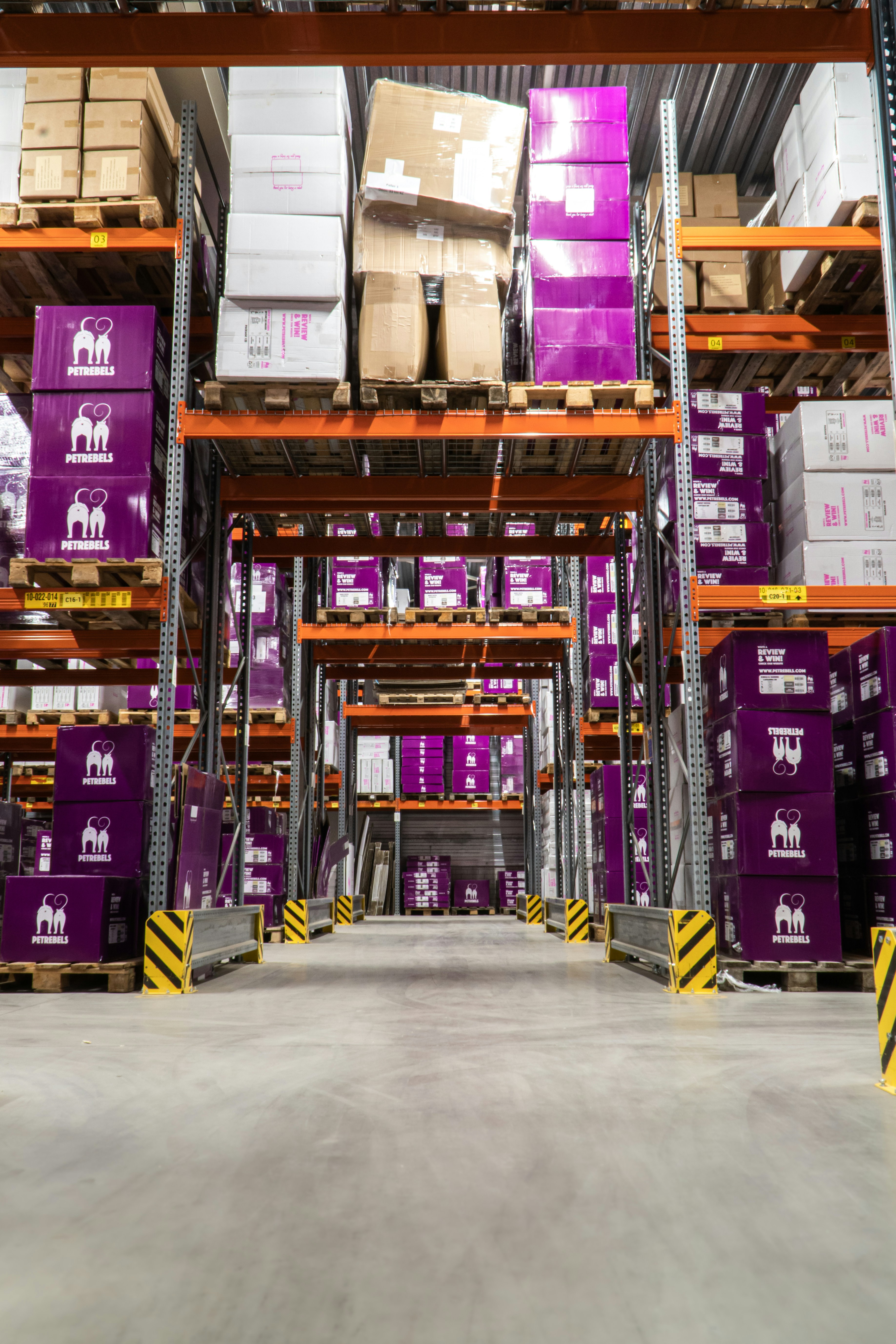Problems in Inventory Management and Their Solutions in 2023

Efficient inventory management is crucial for your company's success. Serving as the heartbeat of operations, it ensures the right products are available at the right moment and in the right quantities.
However, many businesses overlook the importance of inventory management, and as per Zippia, 43% of small businesses don't actively monitor inventory. This results in problems like overstocking or understocking; all related to inventory management.
You might be wondering how to solve these problems; don’t fret. We have discussed all the problems in inventory management you may encounter and how inventory management software can help solve them. Let's dive in!
What are the Problems Caused by Inefficient Inventory Management?

Here are the problems in inventory management that occur when you don't monitor your inventory effectively:
Overstocking
One of the primary problems of inventory management is overstocking. This occurs when a company holds more inventory than necessary to meet demand. Overstocking not only increases administrative costs but also results in expenses related to warehouse space.
Moreover, for perishable items or those with seasonal relevance, the risk of spoilage or deterioration looms large, leading to financial losses due to unsellable inventory. According to a study, inventory distortion caused losses totaling $818 billion globally in a year, and overstocks constitute $362.1 billion (44%) of it.
Longer Lead Times
Another problem in inventory management that may occur is longer lead times. To stay in the business race, you need to follow retail trends and adapt to shifting market conditions and seasonal demands. If you fail to do so, you place your company at a significant disadvantage - longer lead times.
Longer lead times generally mean not having the latest and most sought-after products available when customers demand them. This results in missed sales opportunities and potential erosion of customer satisfaction.
Understocking
Understocking is another consequence of ineffective inventory management, posing a substantial risk to businesses. It refers to the failure to maintain adequate stock levels to meet customer demand.
Hence, your customers are more likely to turn to alternative suppliers who can fulfill their needs promptly. This leads to lost sales opportunities and potential damage to customer trust and loyalty.
What Is an Inventory Management Software?

Inventory management software is a comprehensive digital-native solution that tracks and manages an organization's inventory levels, orders, shipments, and sales. It allows you to monitor and control various aspects of your inventory. Furthermore, it ensures accurate record-keeping, optimizes stock levels, and facilitates efficient order fulfillment processes, ultimately getting rid of the root problems of inventory management.
Features of an Inventory Management Software

Here are some of the common features of inventory management software that help you avoid problems in inventory management:
- Inventory Optimization: Optimizes stock levels to balance the supply and the demand of particular items.
- Product Identification and Tracking: Uniquely identifies and tracks individual items.
- Service Management: Supports service-based firms in asset and tool management.
- Asset Tracking: Monitors and manages valuable assets effectively.
- Reorder Points: Automatically triggers reorder alerts to prevent stockouts.
Benefits of an Inventory Management Software

Some prominent benefits of an inventory check and management software are:
- Automation of Manual Counting: Eliminates the need for time-consuming manual item counting and paper record-keeping, improving accuracy and saving valuable time.
- Real-Time Inventory Data: Provides real-time, accurate information on inventory status, enabling businesses to stay informed about stock levels and trends.
- Enhanced Responsiveness: Allows proactive response to market sales opportunities and changing market conditions by providing insights into inventory trends.
How Does Investing in Inventory Management Software Help You?

Let's see how an inventory management software helps your business in dealing with problems in inventory management:
- Cost Reduction: It ensures the timely ordering of additional stocks in the right amount, preventing stockouts and reducing unnecessary costs.
- Labor Productivity: It can track inventory digitally and locate items quickly, so your warehouse staffs spend less time searching for missing items or manually tracking them down, allowing them to focus on more productive tasks.
- Space Efficiency: Through efficient organization and management of your inventory, inventory management software enables you to make the most of your warehouse space, reducing clutter and improving overall space utilization.
- Customer Satisfaction: Inventory management software also facilitates faster and more accurate order processing. This improved efficiency ensures that customer orders are fulfilled promptly and accurately, helping your business meet customer expectations.
Inventory and Accounting

Effective inventory management, in conjunction with the right accounting principles, allows your business to have real-time visibility into products at every step of the supply chain. This means that you can precisely track the movement, status, and valuation of inventory with precision.
Utilizing various inventory valuation methods is necessary to grasp a realistic overview of your business's inventory situation in accounting terms. One of those is the Weighted Average Cost method. It helps determine the inventory value and impacts the cost of goods sold (COGS) on the income statement. The formula for this is:
Weighted Average Cost = total cost of goods purchased / the number of units available
For instance, you run a small store with three products: sugar, flour, and bread. Let’s consider their purchase prices and quantities.
Sugar:
- Purchase price = $15/unit
- Quantity = 150 units
- Total cost for sugar = 15 x 150 = $ 2,250
Flour:
- Purchase price = $20/unit
- Quantity = 100 units
- Total cost for flour = 20 x 100 = $ 2,000
Bread:
- Purchase price = $5/unit
- Quantity = 400 units
- Total cost for bread = 5 x 400 = $ 2,000
Total cost = 2250 + 2000 + 2000 = $ 6250
Total quantities of units in inventory = 150 + 100 + 400 = 650 units
So, the weighted average cost of inventory = 6250 / 650 = $ 9.61 per unit
Inventory Turnover Rates

Inventory turnover rate is an important metric for businesses, which represents the number of times inventory is sold and replaced over a specific period. This metric directly ties into both inventory management and accounting.
- Low Turnover Rate: A low turnover rate suggests that inventory is not moving efficiently. This can result in duplicate orders, increased carrying costs, and a decrease in the overall value of the inventory. From an accounting perspective, it may lead to an overstatement of the inventory's value on the balance sheet.
- High Turnover Rate: Conversely, a high turnover rate indicates that inventory is moving quickly. While this may seem positive, it can result in higher shipping costs due to the frequent need to replenish inventory. From an accounting standpoint, a high turnover rate might align with a more accurate inventory valuation but can also increase COGS.
- Balanced Turnover Rate: Achieving a balanced turnover rate is the ideal scenario. It implies that inventory moves efficiently, resulting in lower costs and high customer satisfaction.
Here are a few other terms for inventory management.
- Standard Costing: A method for setting expected costs and comparing them to actual costs to control expenses.
- Bill of Materials (BOM): You might be wondering what BOM stands for in manufacturing. It’s a detailed list of costs of materials, parts, and components required for manufacturing specific products.
- Just In Time (JIT): An inventory management approach that minimizes inventory levels by producing or procuring goods on a need by need basis.
- Work In Progress (WIP): Partially completed products or services in various production stages before finalization.
Choosing the Right Software

Inventory management software is a no brainer for solving inventory management problems. It's a part of an enterprise resource system (ERP) that seamlessly unites inventory, accounting, point of sales and supply chain management.
Here are some must-have features your choice of software should have to streamline inventory management.
- Integration: Inventory software should effortlessly connect with other business applications for real-time data sharing and efficient processes.
- Tracking Capabilities: The software should offer flexible tracking options (e.g., SKU, serial number, batch, location) to match your specific inventory management needs.
- Deployment and Maintenance: The inventory management software should be cloud-based as it offers faster and easier deployment than on-premise solutions. They automatically handle updates and provide enhanced security. In contrast, on-premise solutions can be time-consuming to update and may require proactive security measures to prevent vulnerabilities. The best cloud-based inventory management solution is BoxHero!
- Analytics and Visibility: Effective inventory management software should provide robust analytics tools and real-time visibility into your inventory. This includes features like reporting, data visualization, and customizable dashboards. You get to analyze trends, track performance, and make data-driven decisions.
- AI: Inventory management software should have built-in AI capabilities that leverage data-driven insights to offer recommendations for optimizing inventory levels. With AI-assisted insights, businesses are able to proactively adapt to changing conditions.
Conclusion

With an efficient inventory management software, you get rid of all the problems in inventory management, like overstocking, understocking, and more. Inventory management software should have advanced attributes like AI capabilities, cloud-based service, smooth integration with other systems, etc.
The best inventory management software with all these features is BoxHero! It gives you real-time updates on your inventory, allowing easy management of inventory. So, don't wait and get your inventory management solution now!


